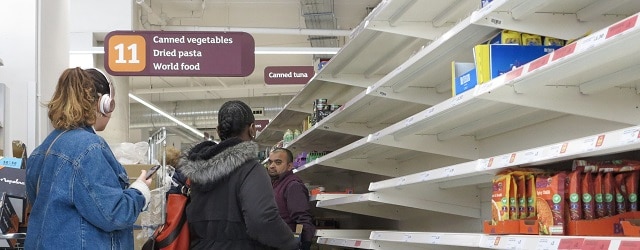Consumer staples are doing well while most other industries have either been hit hard or face uncertain futures.

Wartime-like images of supermarket shelves empty of toilet paper, pasta and produce during the COVID-19 outbreak serve as a warning for the food industry.
Consumer staples are among the few industries that have stayed afloat thus far through the pandemic crisis, unlike travel and leisure. Despite the temporary revenue boost, the road to long-term health is bumpy as disruptions erode margins.
“It’s an unprecedented time right now that we are experiencing,” says Doug Baker, vice president of Industry Relations at US food-industry association FMI. “Some retailers and manufacturers saw an increase in volumes of 100%.” But spiking demand creates challenges at the shelf, he says. Global retailers, from Amazon to Alibaba, have been forced to hire workers, while manufacturers have stepped up volumes and reduced line extensions to cope with the demand shock in China, Europe and the US.
“I don’t view these empty shelves as a positive, necessarily. Retail stores want a world that is normal,” says Anil Passi, managing director of Consumer, Communications, Retail & Media at DBRS Morningstar. “This industry is all about logistics and inventory management. Every product type, the type mix and the margin differences—all blend into the overall economic model of the retailer.”
The supply chain is resilient, Passi and Baker say, but temporary shortages frustrate consumers. In China, panic buying occurred in the early months of the virus outbreak, first reported in December. That was followed by an increase in delivery demand during the quarantine, according to a report from the Wuhan division of the Independent Grocers Alliance (IGA).
Consumers were less price-sensitive on essentials, the report says. Long-shelf-life packaged food, water and beverages sold out first, followed by fresh vegetables, meat and poultry. In January and February, revenues at Chinese retailers surveyed by IGA increased, but margins changed only slightly.
“In the long term, everybody should want the same things: getting people back to normal, economic prosperity, increasing the size of their wallet and buying a more normal mix of products,” Passi says



